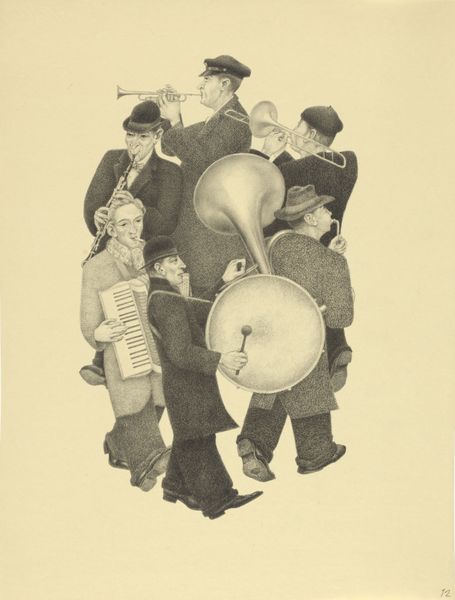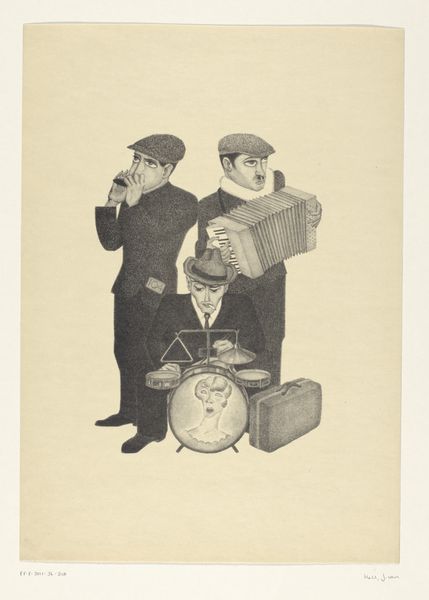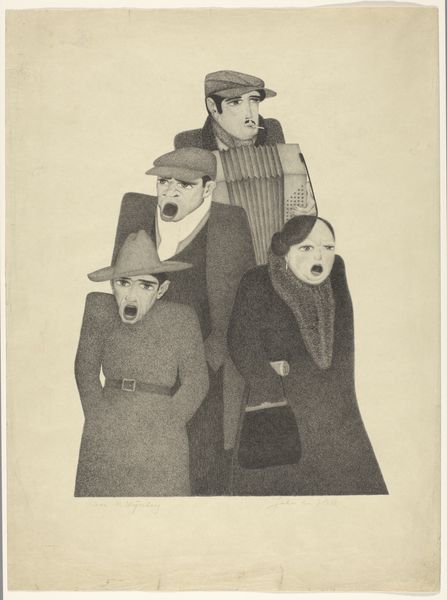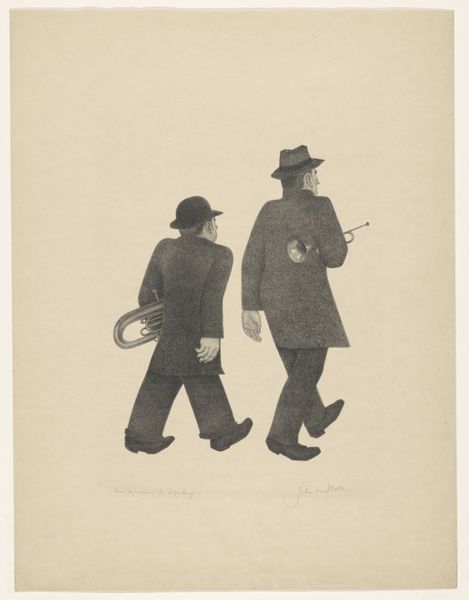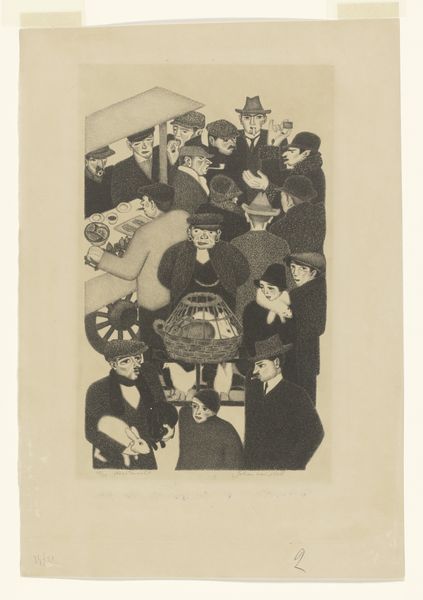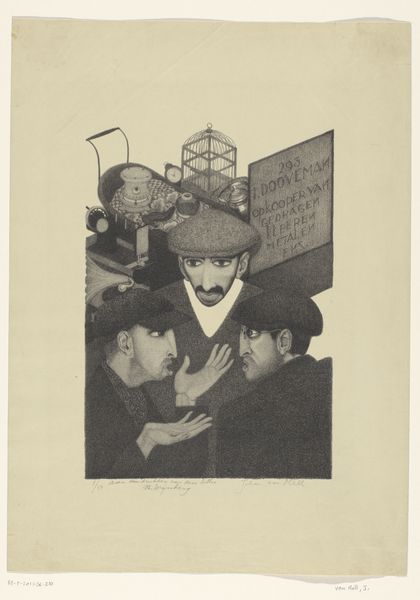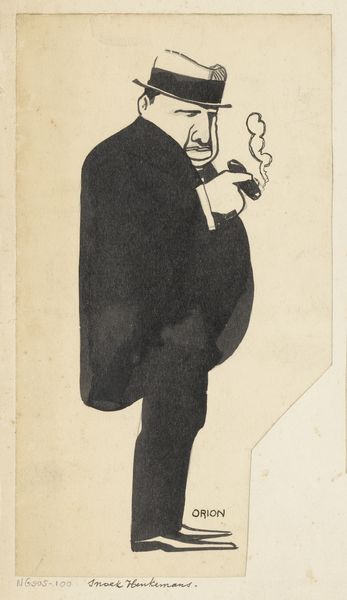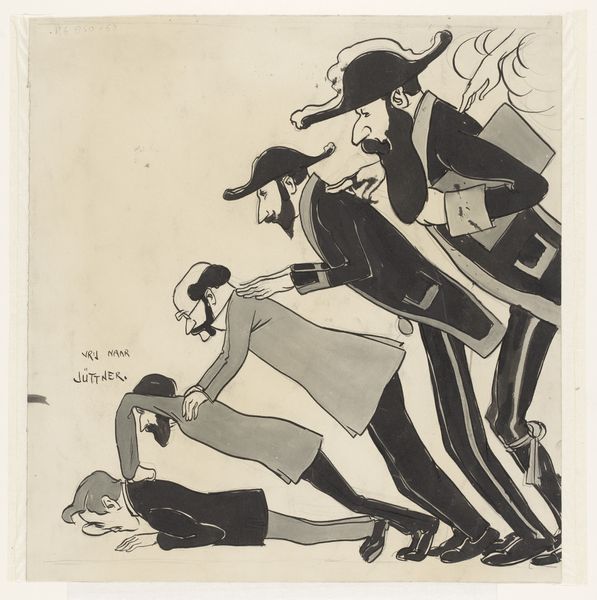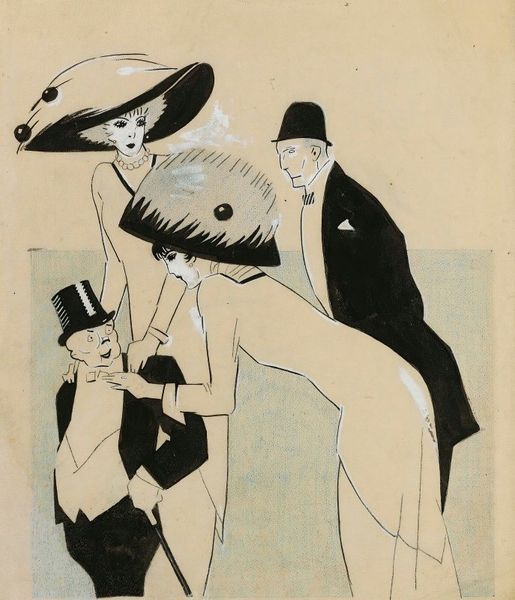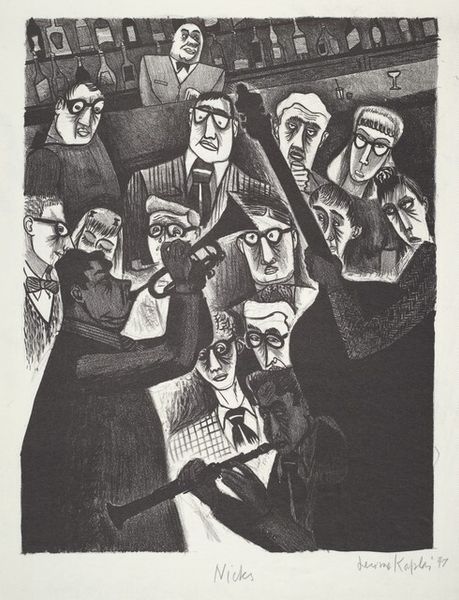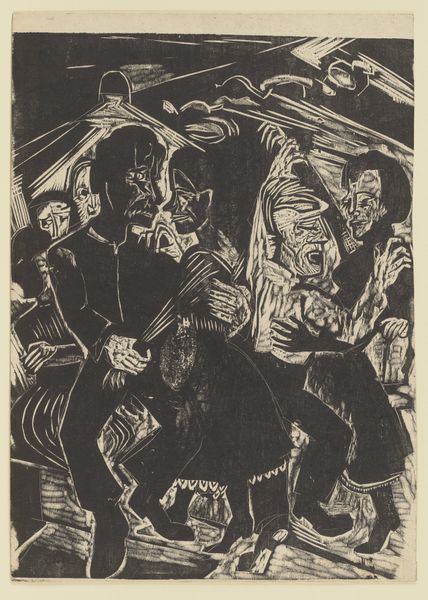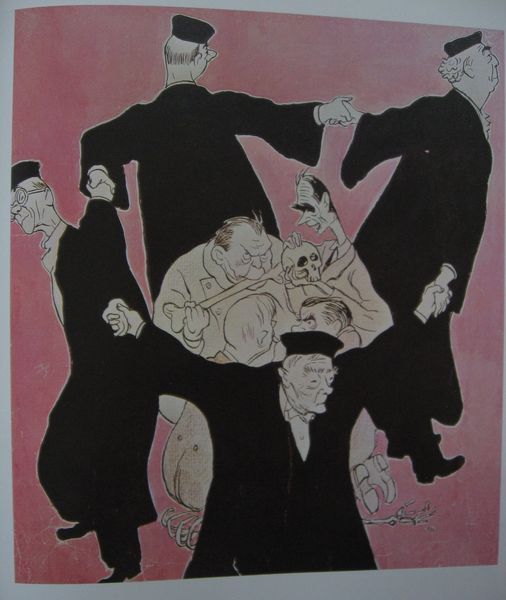
Dimensions: height 370 mm, width 255 mm, height 474 mm, width 322 mm
Copyright: Rijks Museum: Open Domain
Curator: Here we have "Five Musicians" by Johan van Hell, created before 1952. It's a graphite drawing currently held in the Rijksmuseum collection. Editor: My first thought? There’s a distinct sense of weariness here, but also a stubborn refusal to give in, evident in the way the musicians clutch their instruments, each a symbol of resistance, perhaps. Curator: Indeed. Van Hell's work frequently intersected with the social and political anxieties of his time. He tragically faced persecution during the Second World War due to his sexuality and his resistance activities, which adds a significant layer to the reading of this drawing. It prompts a contemplation on the intersectional issues surrounding identity and resilience. Editor: Looking at the texture and shading, I can't help but consider the economic conditions surrounding the creation of this piece. Graphite, readily available and affordable, made art accessible even in times of scarcity. The density of marks, almost obscuring the paper itself, suggests a deliberate act of labour, highlighting the artist's means and dedication to his craft despite any hardships he faced. Curator: And within the context of resistance art, the caricature style points towards social commentary and critique, specifically toward gender performance during wartime. Who were these people during times of prosecution? How did the musicians cope with the lack of venues? Editor: Exactly. These weren’t pristine concert halls. The rough rendering underscores the immediacy and rawness of the experience—emphasizing their worn clothes and determined faces and how this performance comes across as the only venue these performers had. Curator: Their very existence and act of performing could be interpreted as resistance to normative power structures during periods of extreme social and political control, with Van Hell’s legacy as one such individual to highlight such circumstances. Editor: A moving piece of material and production under duress – where even modest methods became a conduit for social resistance. Curator: Yes, and remembering the history and context, it challenges us to reconsider our interpretation of the subjects themselves. Editor: An evocative encounter with a past struggle—the musicians standing together with resistance is a testament of creation.
Comments
No comments
Be the first to comment and join the conversation on the ultimate creative platform.
